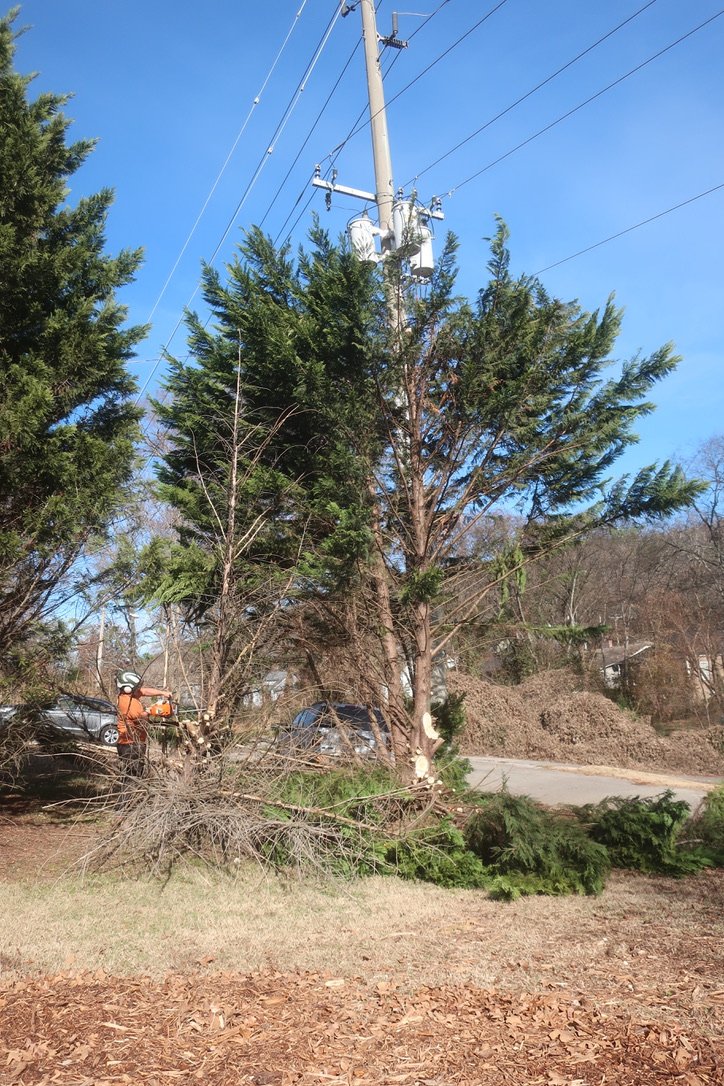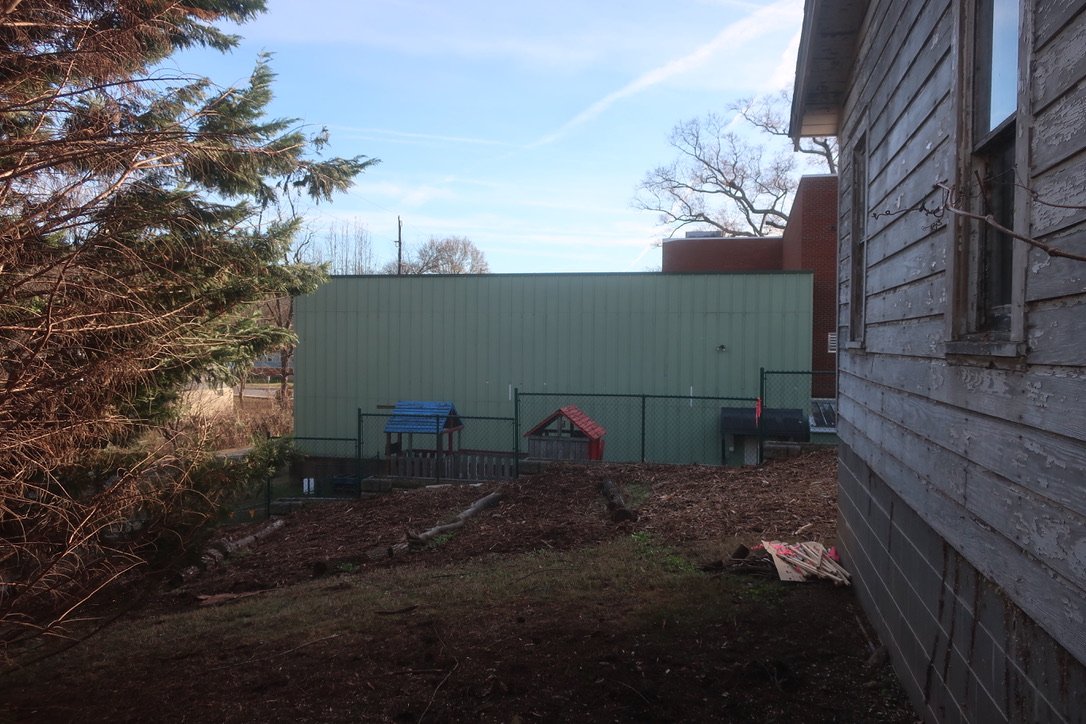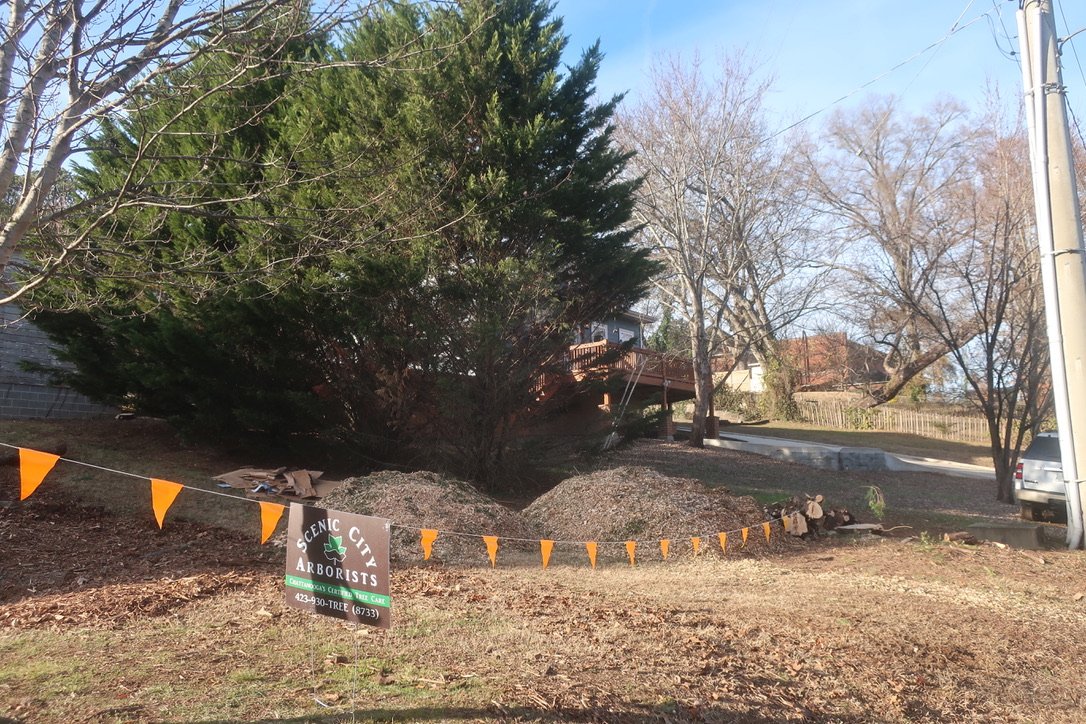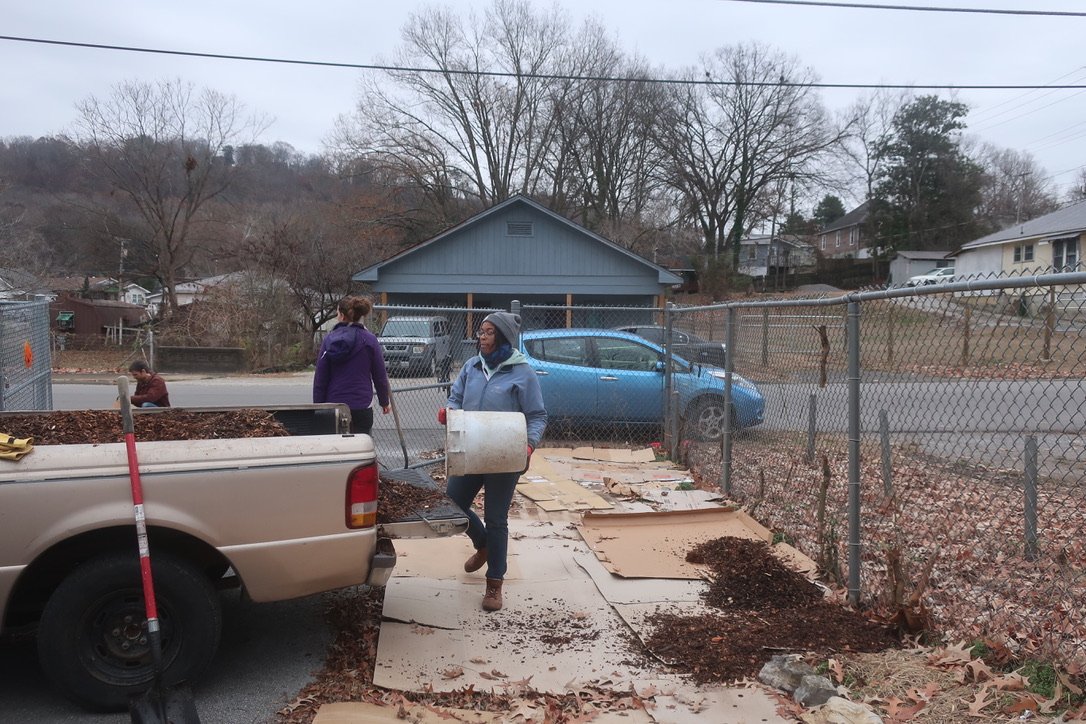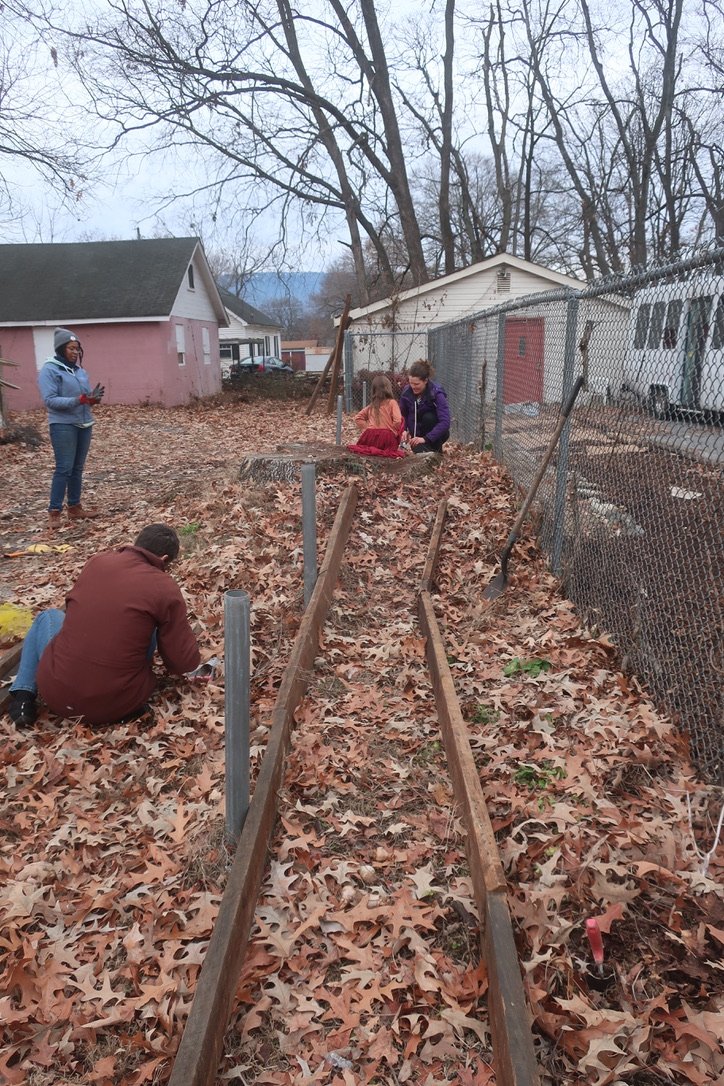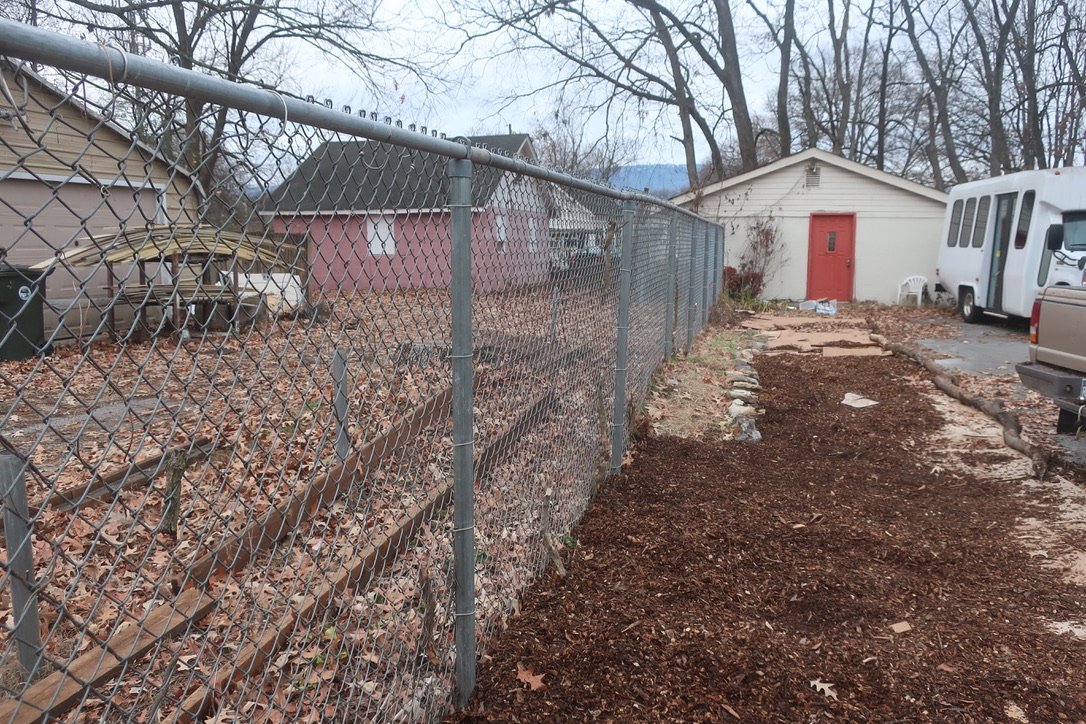December Progress: Work Days and Arborist Activity
There is a lot to report for this month, along with a little prefiguring of the year to come! Since we started this community food forest project back at the end of July of this year, things have truly taken off, thanks to the inspiration and hard work of many volunteers who are committed to realizing a vision for a healthier, more beautiful, and more productive city by way of community food forests rooted (literally!) in neighborhoods across the city. We are now in a position to actually start planting in both of our inaugural sites fruiting trees, shrubs, vines, and a productive and healthy understory, with a goal of some initial harvests as soon as this coming summer, with gradually building harvests in the successive seasons.
I’ll detail our work days and arborist work in chronological order, starting with our most recent work day at the St. Elmo site on Virginia Avenue. It was a gray gloomy day to be honest, and we thought about calling it off because of the threat of heavy rain (sunny weekdays and rainy weekends has been a recurring pattern these last couple months it seems!). Fortunately we didn’t—instead we had wonderful turn-out, including some folks who had not volunteered with us before and were able to lend strong backs and learn a bit more about the project. A couple of days before a couple of us had hauled to the site a substantial load of wood chip from the city’s wood recycling center, and a sizeable load of aged horse manure from a horse stable and farm in nearby Flintstone; along with cardboard, dead leaves, and logs already on-site we had just enough material to keep everyone busy for a couple hours, with a second load of wood chips topping off the day (thank you to Pastor Walter and the use of his pick-up truck!). By the end of the work session, we had most of the site manured and mulched, though we had to leave a strip on the right-hand side open for the arborists to remove the tree against the old garage; we’ll finish that strip on our next work session. Berm logs are in place, cover crops are coming up (once it finally started to rain again), and we tried out a mixture of layered elements over our poor soil to see what works best.
While our friends at Scenic City Arborists had originally intended to cut and chip some trees for us before our December work day, technical troubles delayed them—but they came through! We needed three of the cypresses at the border of our site removed, one for the installation of our water catchment system, the other two in order to make room for raised beds and our interpretive sign (plus they’re not exactly the best trees for multi-purpose use, they provide shade and windbreak/visual screening, that’s it). Scenic City incredibly generously offered to do this tree work for us at not cost to us, which was just an amazing gift so early on in our project’s history! Their crew came out on a sunny afternoon and made quick work of the trees in question, leaving us with two glorious piles of fresh wood chip which we’ll use on the site to finish up prep work. We now have the room for the big infrastructural aspects of this site, which we’ll hopefully be tackling in the near future.
Finally, we had a second December work day at our slightly newer ELLA Library site in the Cedar Hill neighborhood; the ‘pocket’ food forest here will adjoin an area of raised beds and other features geared towards both children and the elderly, and will benefit both the patrons of the library as well as passers-by in the neighborhood. Our working space is a bit limited at the moment due to the somewhat absurdly large old parking lot installed at some point in the past to service the building’s prior occupants; that said, we have room down along the fenceline on both sides, and part of that fenceline happens to have surprisingly rich soil, thanks to an enormous oak tree that stood there for quite some time (most likely prior to the neighborhood’s development). We had already done a bit of work previously, so our work day consisted of putting some mulch down, planting daffodil bulbs, plotting a path, and thinking out loud about the site’s future. Our vision at the moment is to have muscadines and black and raspberries climbing the fence at the center, with small fruiting trees forming a sort of hedge against the alleyway, edible and flowering plants filling the various spaces, and a pallet fence marking the food forest section off from the play area (and so hopefully limiting damage from balls flying through the air!).
One other thing to mention that came out of this month: Crabtree Farms has also started a community food forest project, adjacent to the traditional community garden that they host on their grounds; we’ll be affiliating that food forest into our network, and coordinating with them when they need volunteers to come out and work, and sharing experiences, successes, failures, and resources as we go. I’ll have more to write about their project next year, including a stand-alone description on this website, along with more detailed descriptions of our other two locations (and who knows, 2024 might see a third or fourth at some point, that would be lovely).
That then is a wrap on 2023—it’s hard to believe that in just a few short months we’ve gone from a very general idea and set of ambitions and possibilities to actual physical sites that are ready for planting and growing in! Honestly when I first floated this idea back in the summer I was fully prepared for it to go nowhere, or to take off very slowly. Instead we’ve had just a swell of interest and participation, and I am cautiously hopeful about the coming year and what we can accomplish together. I don’t really know yet just what this community food forest project is going to end up being, exactly, or how far it can go, who it can reach, what kind of footprint, literally and more metaphorically, it can have in our wider community, but I am excited to find out. Certainly, I have my own wild ideas and dreams—among them, it would be wonderful to eventually have a ‘hub’ site of a couple of acres or more, with a full suite of interpretative material, resources, classes, and the like; but for now we certainly have our hands full with the sites we’ve got, and plenty of work for the coming year! If you would like to contribute or just stay in touch, do contact us and we’ll add you to the email list and keep you up to date; you can also check out our Facebook page as well if you haven’t already.
See y’all in the new year!




